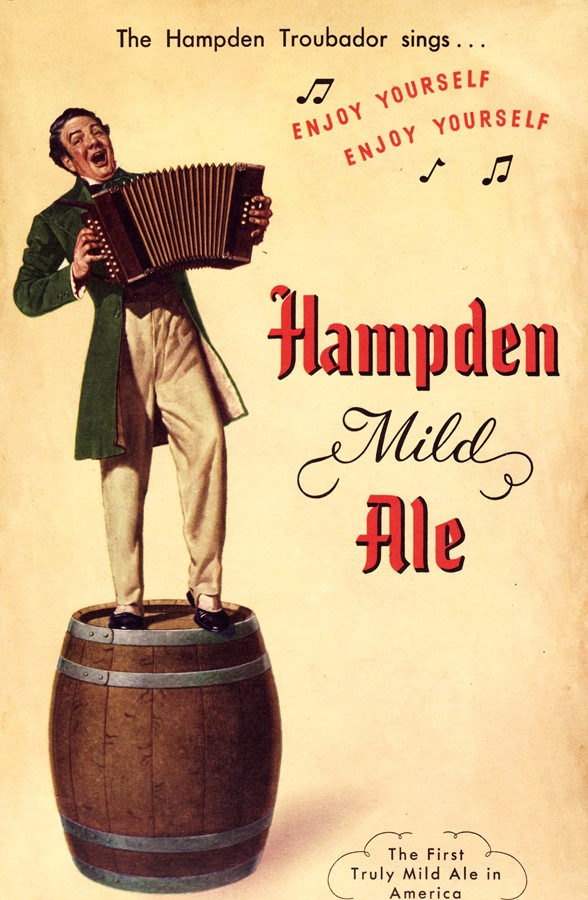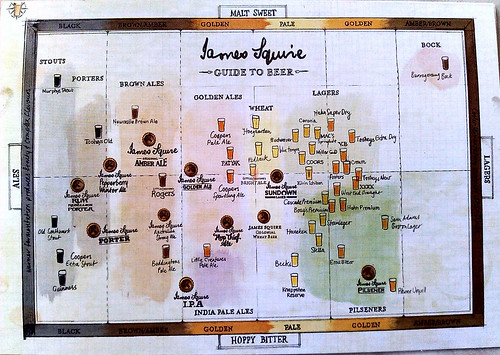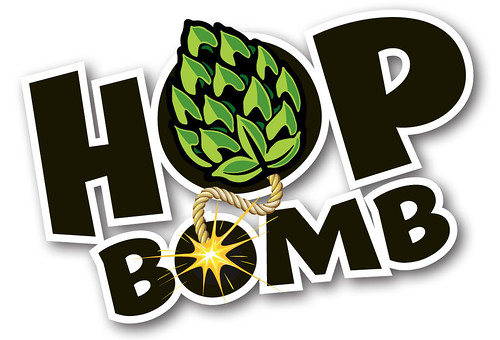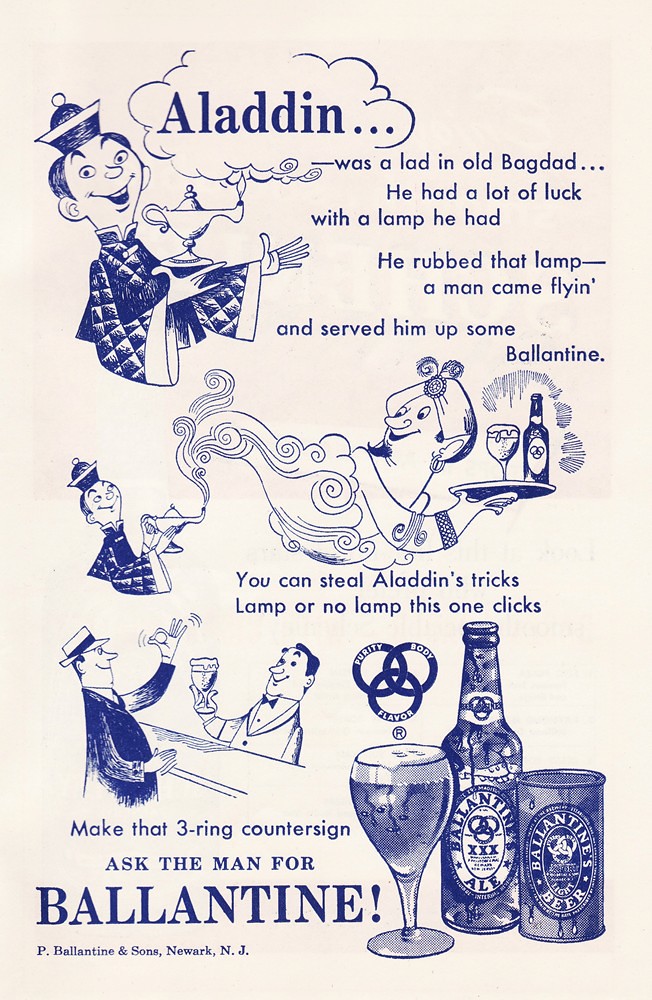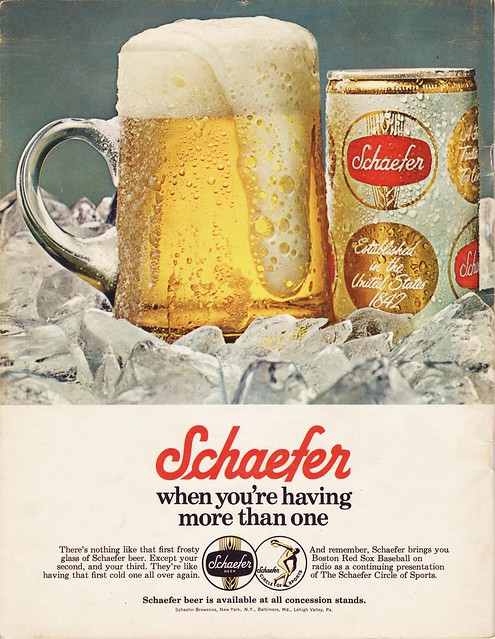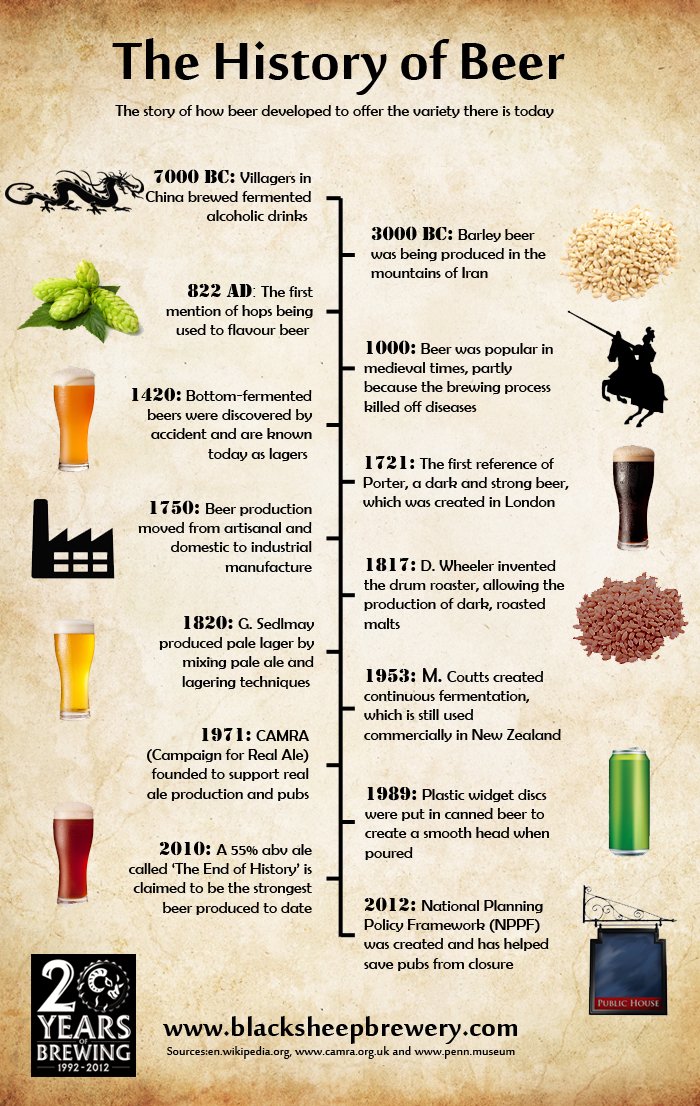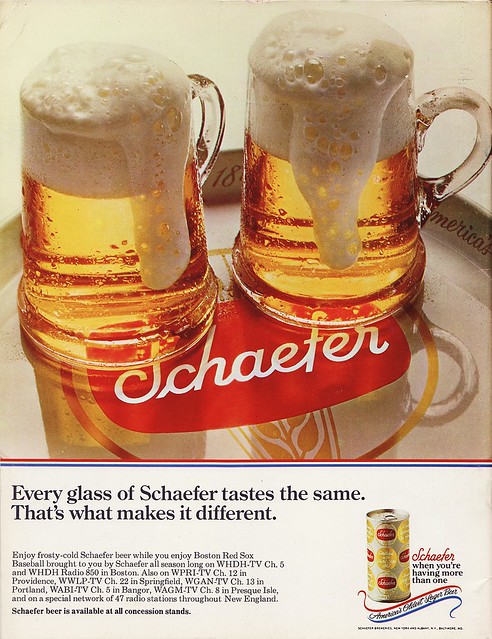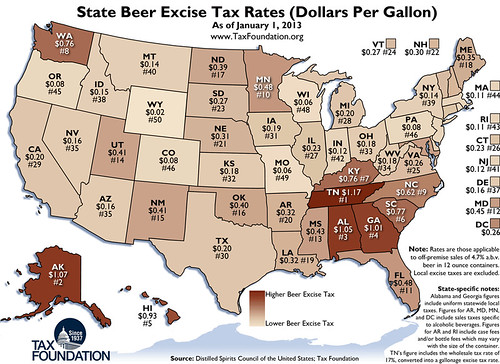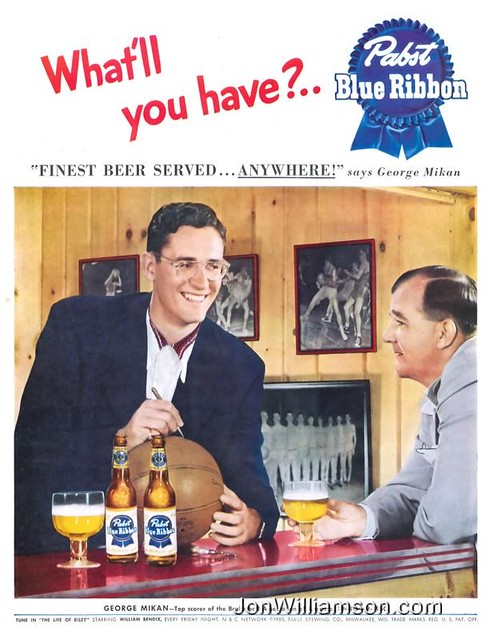
Friday’s ad is for Hampden Mild Ale, from the 1950s. Hamden Brewery was located in Massachusetts. I’m not sure that troubadour singing “Enjoy Yourself, Enjoy Yourself” from atop a beer barrel would make anyone want to drink their beer, but who knows. The tagline at the bottom is pretty interesting. “The First Truly Mild Ale in America.” I wonder who true that was?
